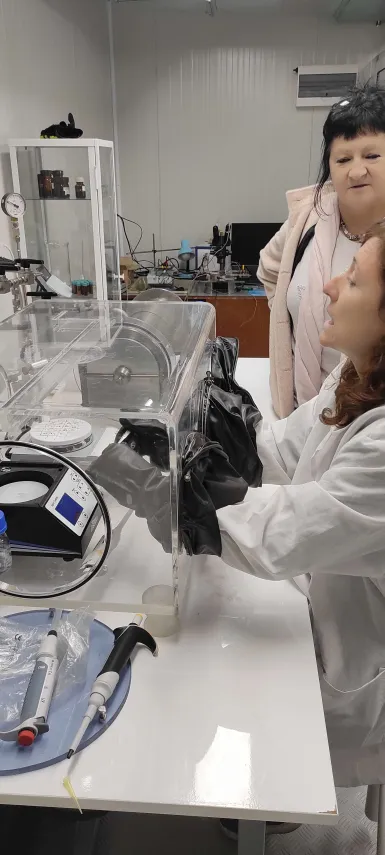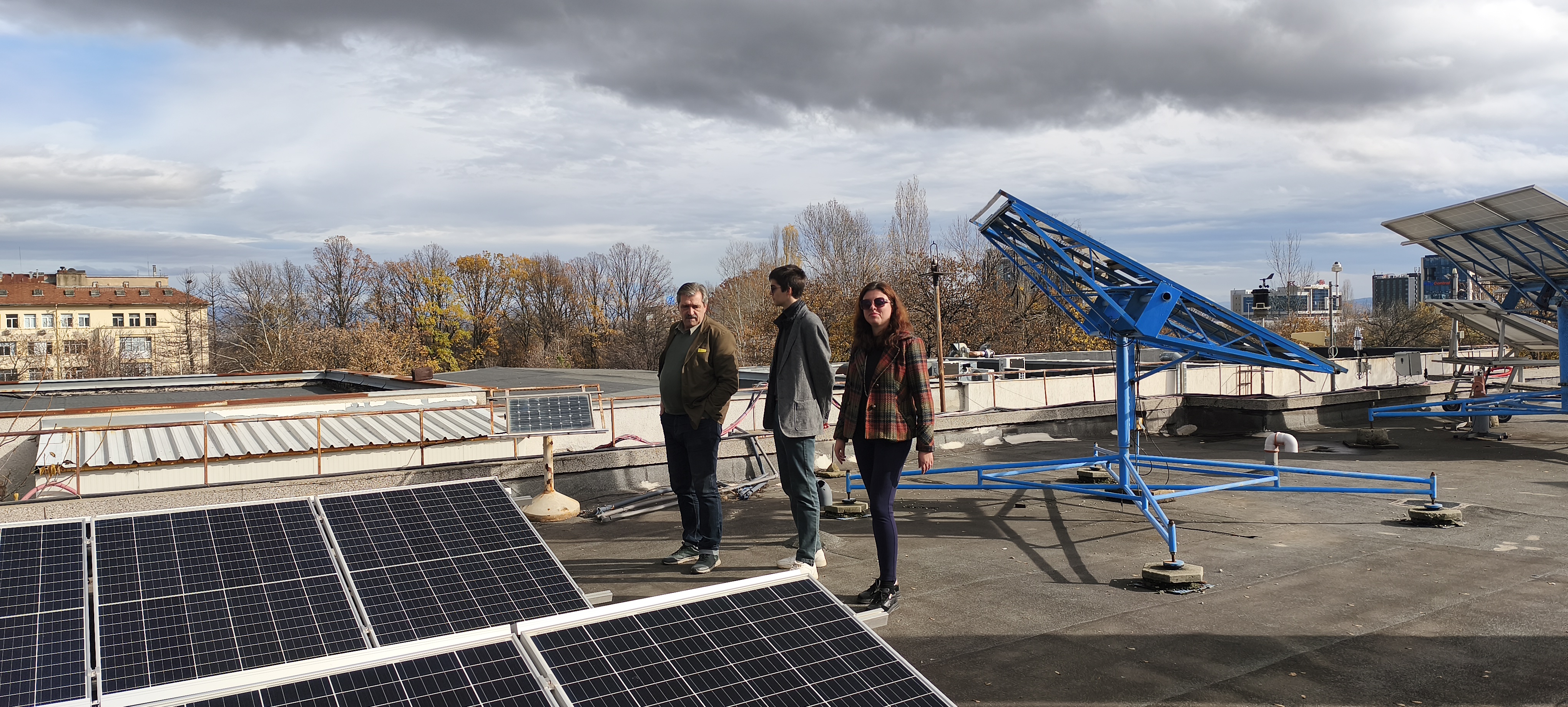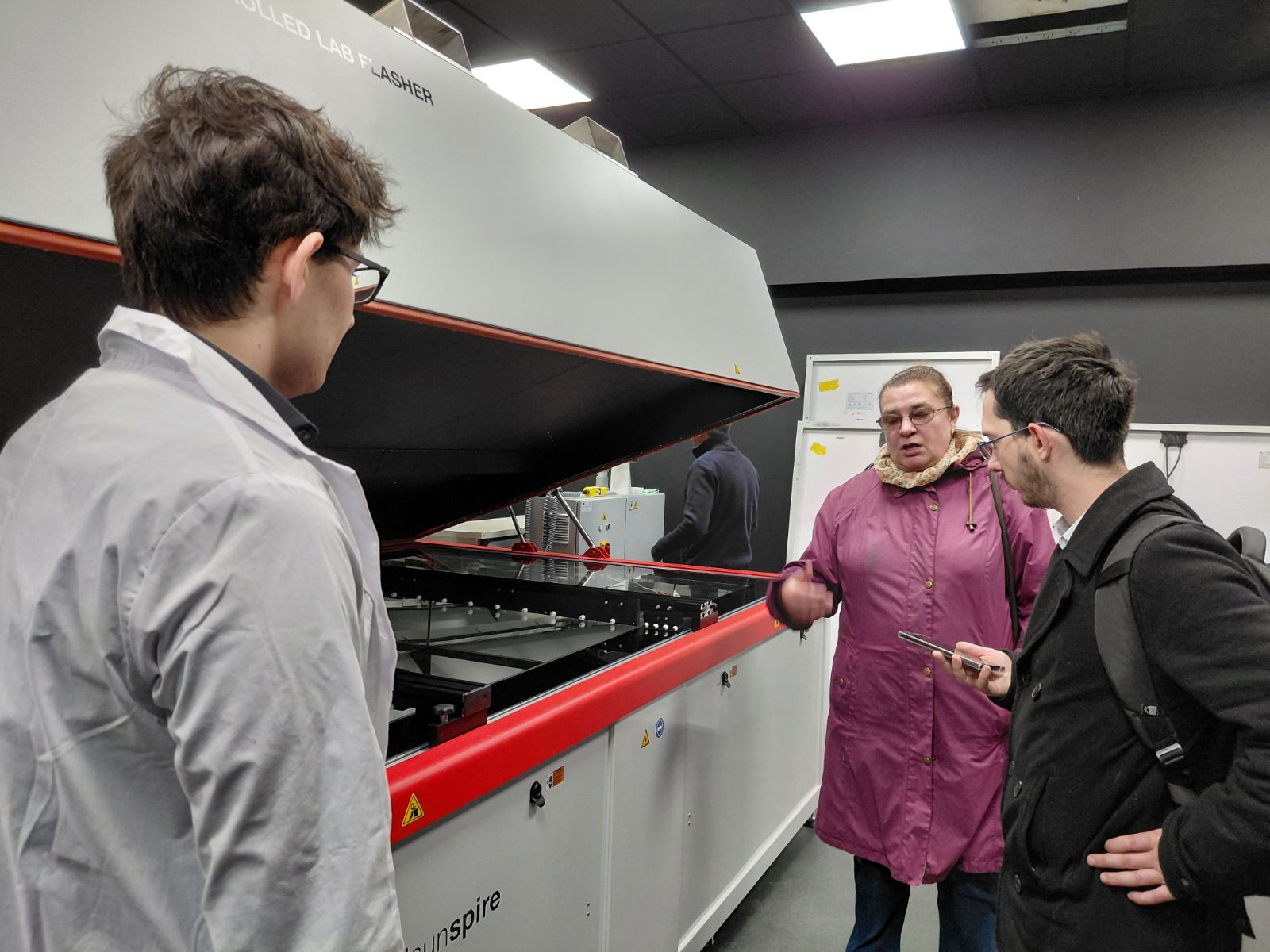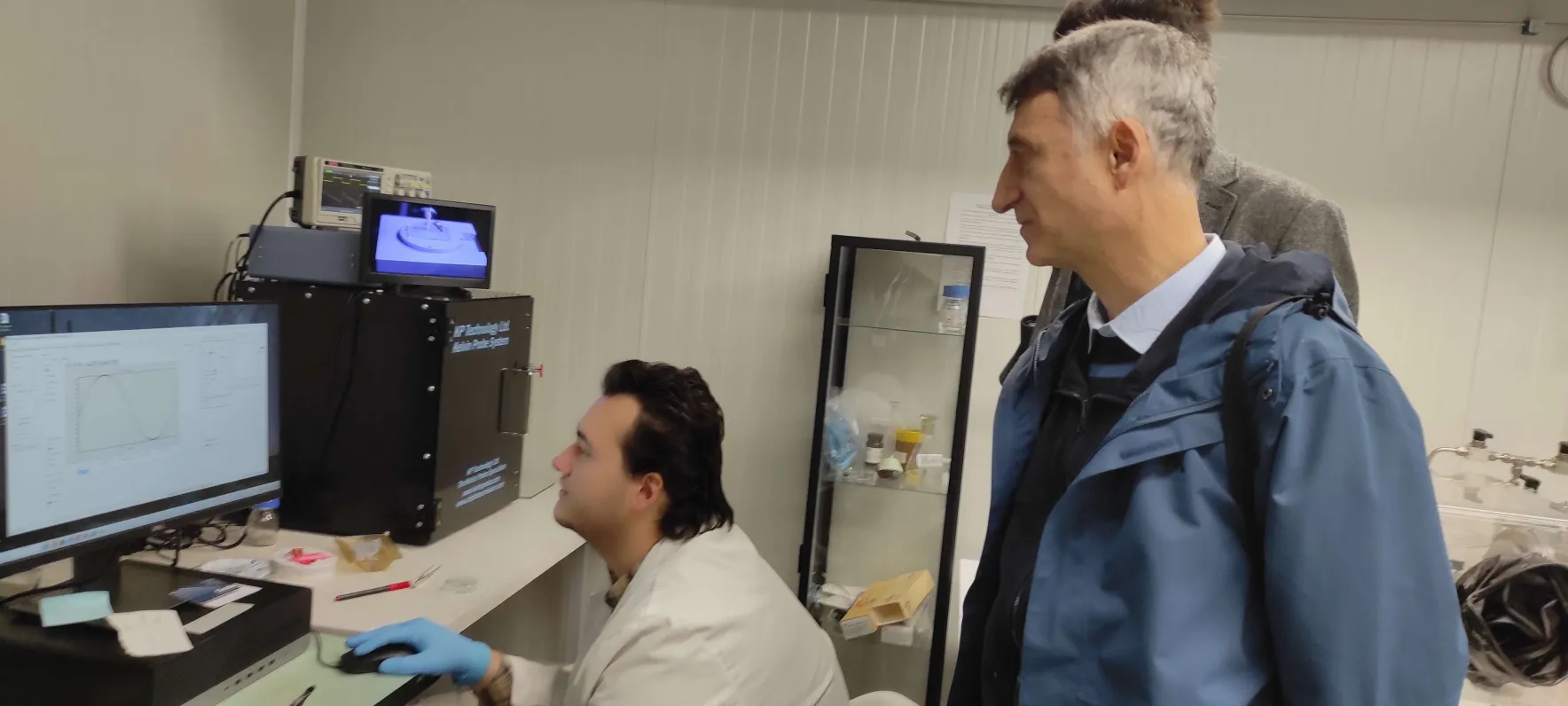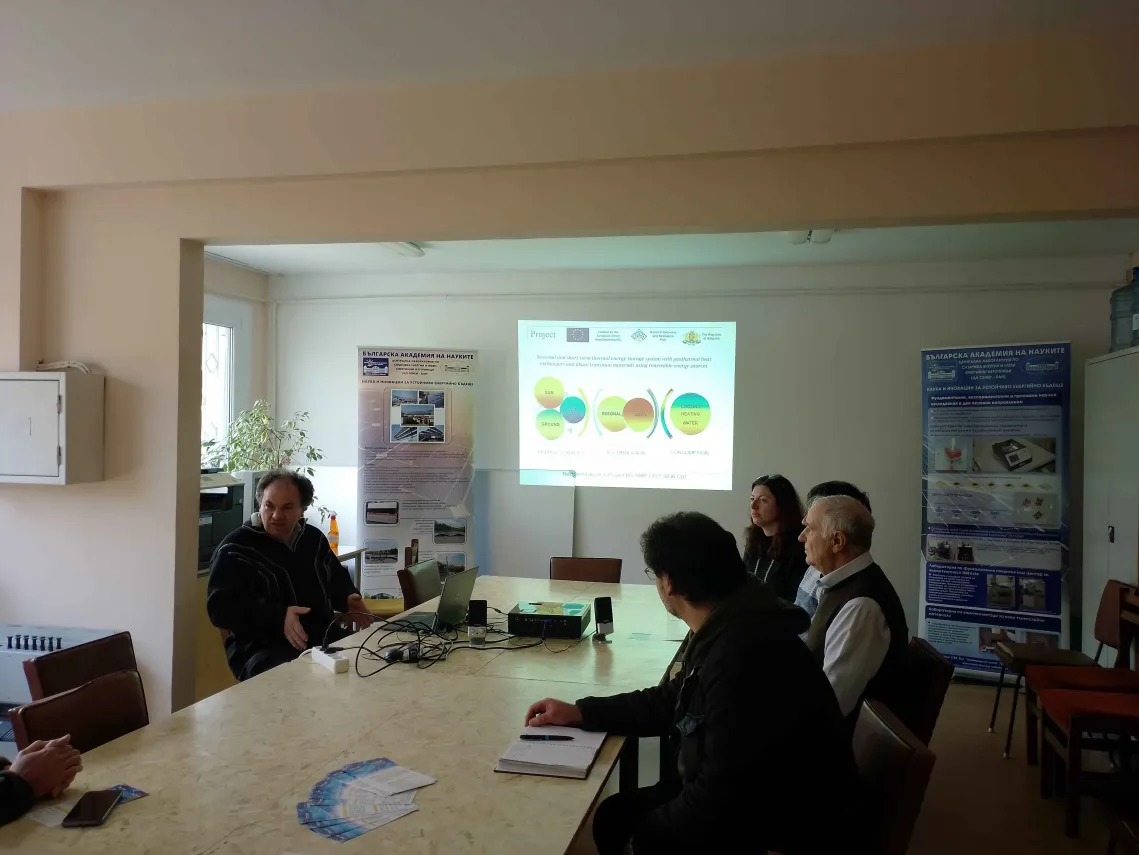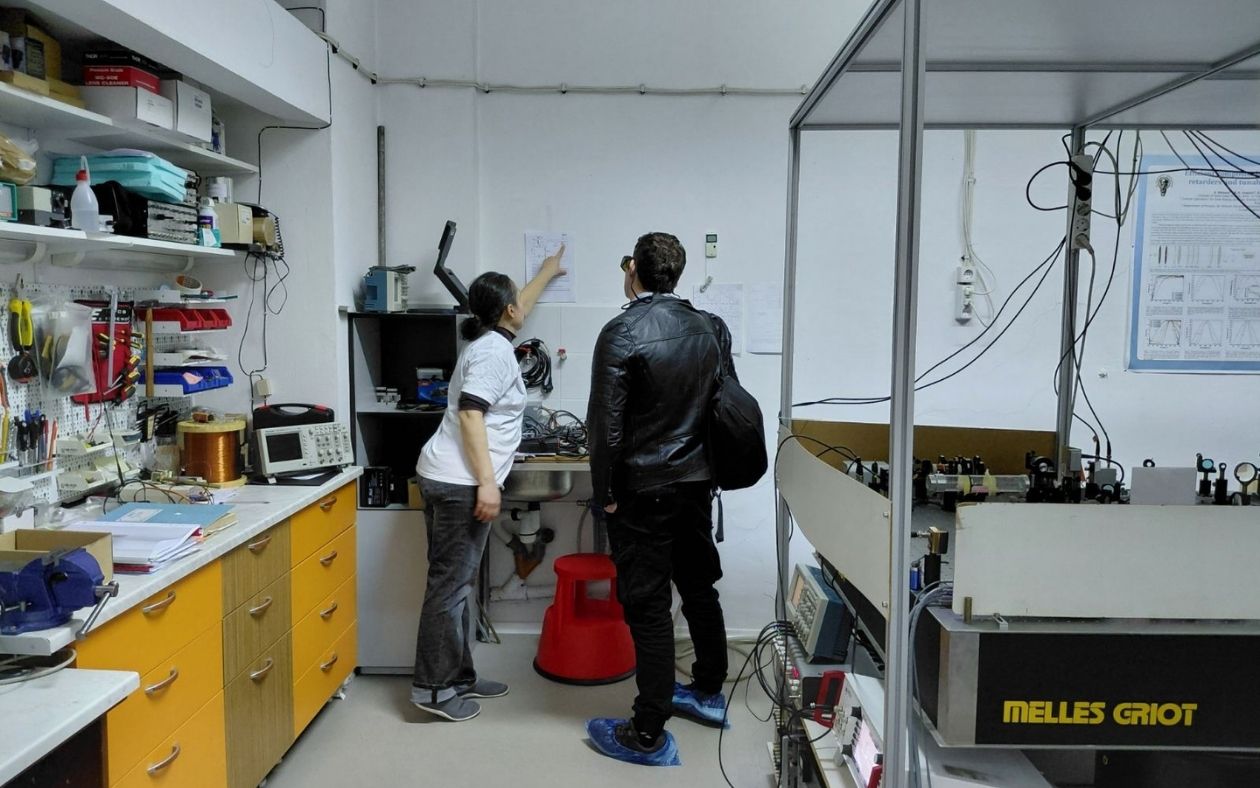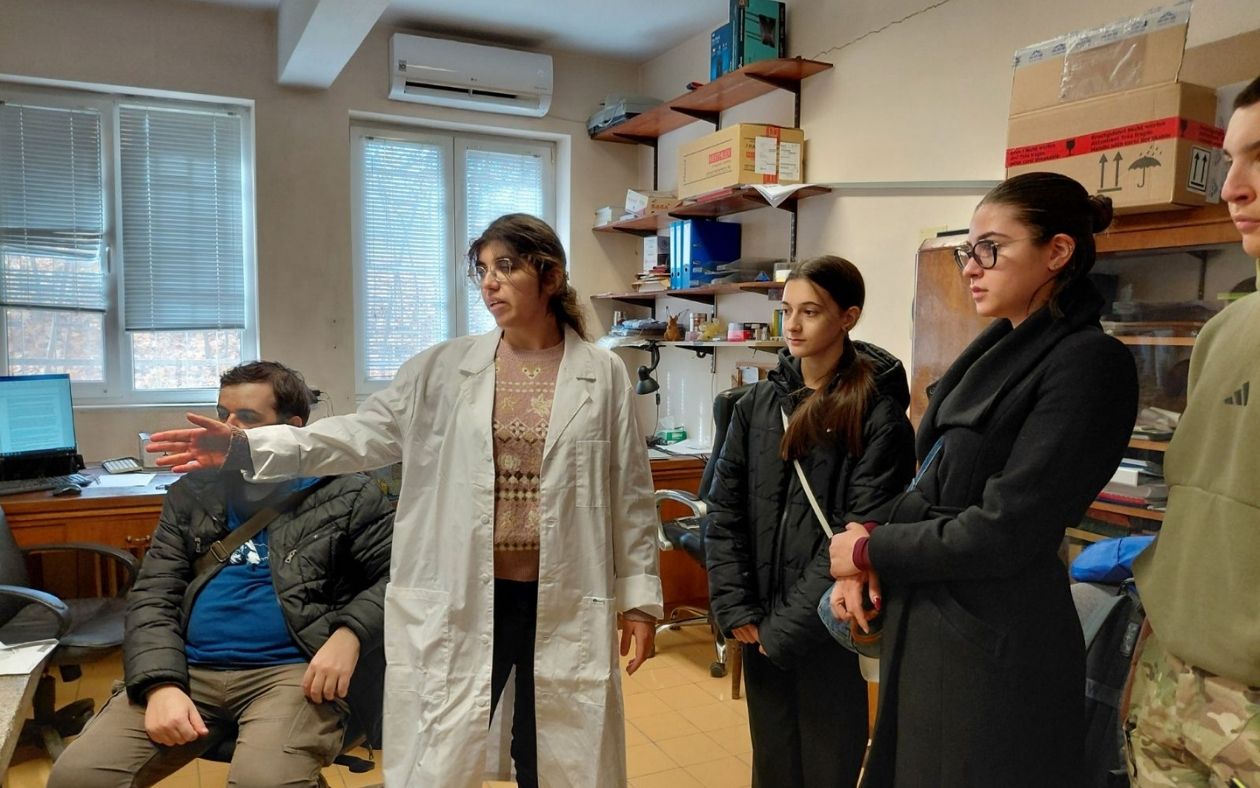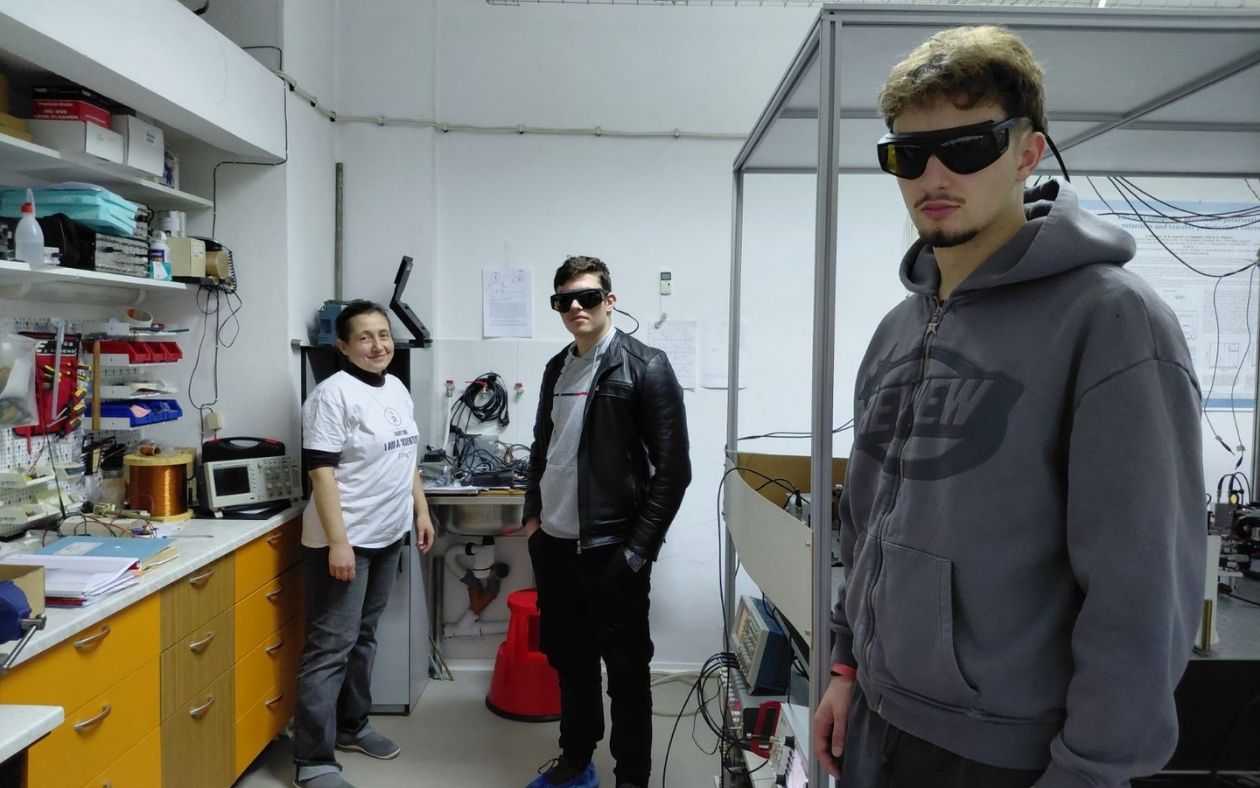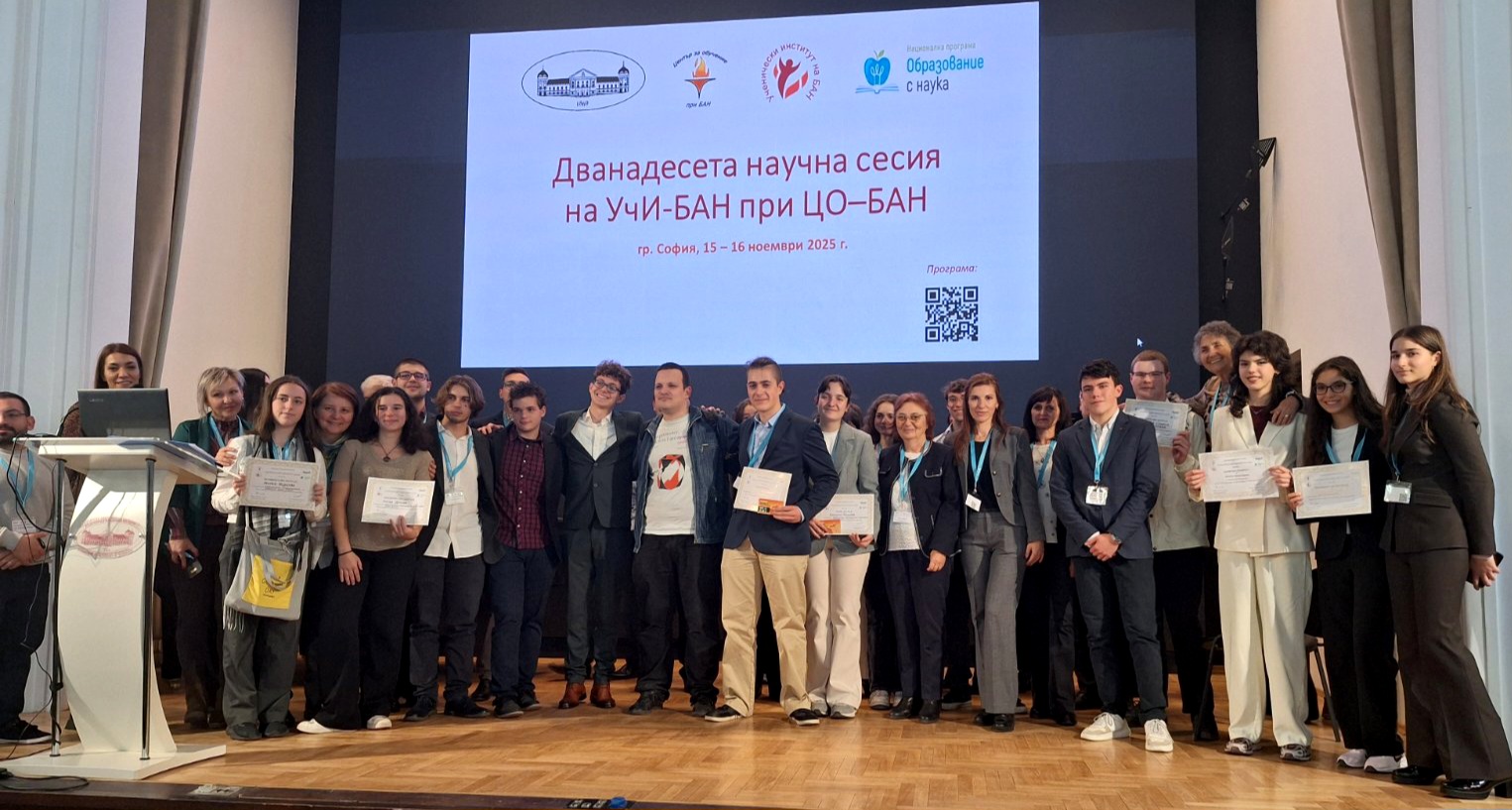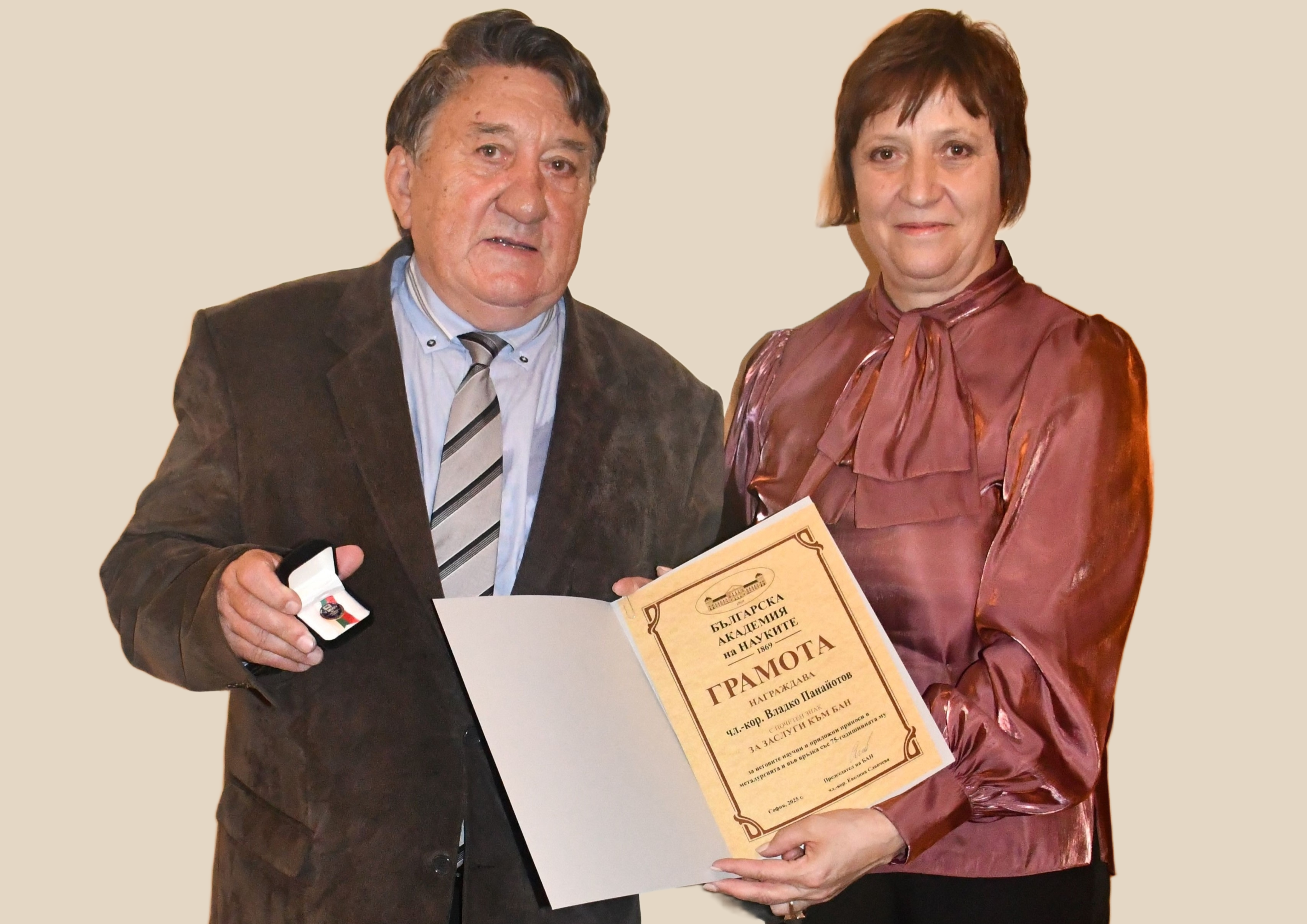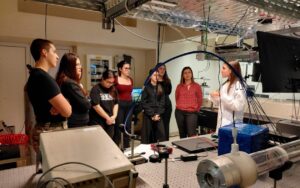 Students from several schools in Sofia and university students visited the laboratories at the Scientific Complex 2 of BAS during the first joint Open Day which took place on November 21. The Central Laboratory for Solar Energy and New Energy Sources, the Institute of Solid State Physics, the Institute of Electronics, and the Institute of Astronomy with National Astronomical Observatory took part in the event on the topic of “Light, Energy, and Technologies of the Future: From Celestial Mechanics to Atomic Dynamics.”
Students from several schools in Sofia and university students visited the laboratories at the Scientific Complex 2 of BAS during the first joint Open Day which took place on November 21. The Central Laboratory for Solar Energy and New Energy Sources, the Institute of Solid State Physics, the Institute of Electronics, and the Institute of Astronomy with National Astronomical Observatory took part in the event on the topic of “Light, Energy, and Technologies of the Future: From Celestial Mechanics to Atomic Dynamics.”
At ISSP, Assoc. Prof. Boyan Torosov introduced the audience to the latest quantum technologies that had led to the development of quantum computers and the experiments conducted with the prototypes existing at this stage; Assoc. Blagoy Blagoev traced the development of nanotechnologies and the wide range of applications of nanomaterials while Assoc. Prof. Krastyo Buchkov’s lecture on superconductivity as a phenomenon of significance for energy, quantum technologies, and medicine ended with a demonstration of the Meissner– Ochsenfeld effect.
In the open laboratories, researchers presented visitors with the capabilities of laser systems that allow them to perform precision processing of materials, conduct research on both ultra-fast dynamic processes and atoms trapped in a magneto-optical trap, and the vacuum system for creating filters, mirrors and anti-reflective coatings used for scientific instruments and lasers, the precision gas chromatograph which ensures quality control and rapid toxicological analysis, objects representing a model of a real biological cell used in the development of systems for the controlled and precise release of drugs into the body.
At the Institute of Electronics, Deputy Director Assoc. Prof. Sanka Gateva opened the event and greeted those present. She briefly presented the activities of the scientists and their work on major international projects. “Twenty-five doctoral students have successfully defended their dissertations, and another nine are currently preparing at the institute. Among them are three young researchers from India and Italy,” Assoc. Prof. Gateva said in her speech.
In his lecture “The Great Potential of Small Instruments,” Prof. Liudmil Antonov talked about the possibilities of vibrational spectroscopy and new methods of green analytical chemistry—how sensors can be used to perform rapid non-destructive analysis of food, beverages, medicines, and even cultural heritage objects. Together with his team, he demonstrated how industrial and research miniature devices work for such analysis.
Dr. Tsanislava Genova presented a lecture entitled “The Knowledge That Light Gives Us” in which she discussed the work of researchers at the Biophotonics Laboratory. Using optical diagnostic methods, scientists assist medical professionals in their research on changes in human tissue. The laboratory has developed a prototype for optical biopsy and digital histology.
During the Open Day, scientists from the Institute of Electronics also presented laser methods for micro- and nanostructuring, demonstrated how the hardness of metal materials is tested, and showed how new surfaces are structured.
The Central Laboratory of Solar Energy and New Energy Sources (CL SENES) was visited by lecturers and students from the Faculty of Physics at Sofia University and the University of Chemical Technology and Metallurgy. Partners of CL SENES (Institute of Mechanics – BAS) also showed interest as did people with an interest in the field of renewable energy sources – from the private sector and Greenpeace Bulgaria. In lectures, the scientists presented their work to those present. Assoc. Prof. Maxim Ganchev and Rumen Stoykov spoke about a system for seasonal and short-term storage of thermal energy with geothermal heat exchangers and phase change materials using renewable energy sources. Visitors also had the opportunity to participate in demonstration tours.
On Open Day, Dr. Petia Yanchulova from the Institute of Astronomy with National Astronomical Observatory gave a lecture entitled “The Universe through the Eyes of Space Telescopes,” and Assoc. Prof. Alexander Kurtenkov spoke on the topic “Why are there eight planets in the Solar System?”


